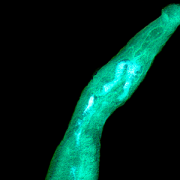Improving outcomes of infant spinal anesthesia through new intervention program

New intervention program could help improve outcomes of infant spinal anesthesia.
Spinal anesthesia has a long history as an effective and safe technique to avoid general anesthesia (GA) in infants undergoing surgery. However, adverse effects of GA on infants — children younger than 1 year of age — include respiratory complications, delayed postanesthesia care unit (PACU) discharge and unplanned hospital admissions. In addition, while some reassuring studies have demonstrated the safety of anesthetic agents on the developing brain, the data are still inconclusive, particularly for patients with longer, more frequent anesthetic exposures.
The big picture
In a recent study published in the journal of Pediatric Quality and Safety, Sophie Rose Pestieau, M.D., anesthesiologist at Children’s National Hospital and senior author of the study, and other experts, created a healthcare improvement program aimed to increase the percentage of successful spinal placements as the primary anesthetic in infants undergoing circumcision, open orchidopexy or hernia repair from 11% to 50% by the end of 2019 and sustain that rate for 6 months.
What it means
The interdisciplinary team created a key driver diagram and implemented the following interventions: education of nurses, surgeons and patient families; focused anesthesiologist training on the infant spinal procedure; premedication; availability of supplies; and surgical schedule optimization.
The team collected data retrospectively by reviewing electronic medical records. The primary outcome was the percentage of infants undergoing circumcision, open orchidopexy or hernia repair who received a successful spinal as the primary anesthetic. The team tracked this measure and evaluated using a statistical process control chart.
“We were able to move the needle and successfully offer this technique to many more infants as we educated families on the benefits of spinal anesthesia, as well as other surgical colleagues and the perioperative nursing staff,” Dr. Pestieau said.
Why it matters
Before this quality improvement project, 11% of the circumcisions, open orchidopexies and inguinal hernia repairs were performed in infants using spinal anesthesia as the primary anesthetic. Between August 1, 2018, and February 29, 2020, 470 infants underwent circumcision, open orchidopexy or inguinal hernia repair (235 preintervention and 235 postintervention). Of these infants, 132 underwent a successful spinal anesthetic (26 preintervention and 106 postintervention). Following the interventions, spinal placements increased from 11% to 45%, and the success rate of infant spinal anesthesia increased from 73% to 89%.
This quality improvement project successfully increased the percentage of patients receiving spinal anesthesia for specific surgical procedures by increasing the number of patients who underwent successful spinal anesthesia placement.
“We continue to grow the program by expanding the use of spinal anesthesia to other surgical procedures,” Dr. Pestieau concluded.
The project aimed to increase the number of urological procedures successfully performed under spinal anesthesia in children less than 1 year of age. The interventions increased the number of patients who underwent spinal anesthesia placement. They also increased the success rate of spinal anesthesia placements. Further quality improvement efforts may increase the number of infants considered for infant spinal anesthesia as primary anesthesia for their procedure, beyond circumcision, open orchidopexy and inguinal hernia repair.











